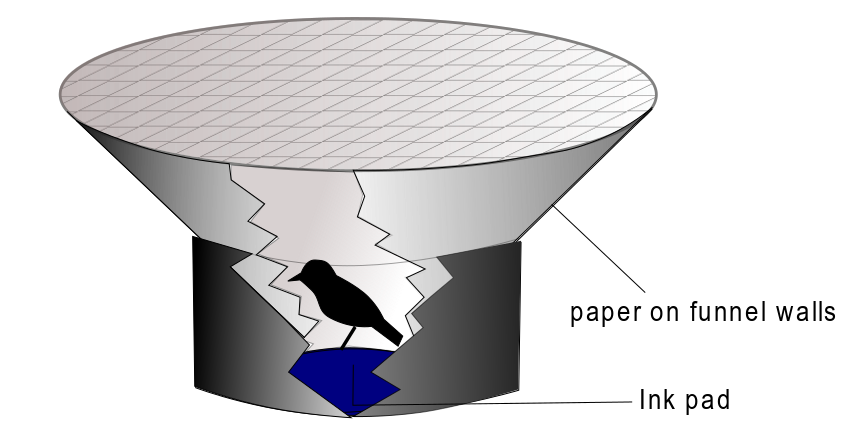Birds possess a remarkable ability to navigate using Earth’s magnetic field, a talent that has fascinated scientists for decades. This magnetic sense allows birds to complete extraordinary migratory journeys spanning continents and oceans with astonishing precision. However, researching and understanding this magnetic sensory system presents unique challenges. Many researchers, both amateur and professional, make critical mistakes when investigating how birds detect and interpret magnetic fields. This article explores common pitfalls to avoid when studying avian magnetoreception, helping to clarify this complex and still-mysterious sensory capability.
Overlooking the Multiple Receptor Hypothesis

One of the most fundamental mistakes researchers make is assuming birds have only one type of magnetic receptor. Current evidence strongly suggests birds possess at least two distinct magnetoreception systems working in tandem. The first involves cryptochromes—light-sensitive proteins in the eyes that may enable birds to literally “see” magnetic fields as visual patterns. The second likely involves magnetite particles, tiny iron-containing structures in the upper beak or inner ear that respond physically to magnetic fields. Focusing exclusively on either system leads to incomplete understanding. The interplay between these systems appears crucial for full navigational capability, with the cryptochrome system potentially providing compass information while the magnetite-based system may offer positional data.
Ignoring the Role of Light

A critical oversight in magnetoreception research is failing to account for the crucial role light plays in birds’ magnetic sensing abilities. The cryptochrome-based system appears to function only under specific light conditions, particularly in the blue-green spectrum. Studies conducted in inappropriate lighting conditions frequently yield confusing or contradictory results. Research has shown that birds tested under monochromatic red light often lose their ability to orient using magnetic cues, while those under blue light retain this capacity. This photo-dependence means that experimental lighting conditions must be carefully controlled and reported, and field observations must consider ambient light conditions when evaluating navigational behaviors.
Assuming Static Sensitivity Throughout the Day

Researchers frequently make the error of presuming birds’ magnetic sensitivity remains constant throughout the day. Evidence increasingly suggests that avian magnetoreception exhibits circadian rhythmicity, meaning birds’ sensitivity to magnetic fields fluctuates on a daily cycle. This temporal variation might explain inconsistent experimental results when tests are conducted at different times of day. For migratory species, magnetic sensitivity appears heightened during their typical migration times, which often occur at specific times of day or night. Understanding these temporal patterns is essential for designing valid experiments and correctly interpreting results from behavioral studies examining magnetic orientation.
Neglecting Species-Specific Differences

A pervasive mistake is generalizing findings from one bird species to all birds. Magnetic sensing capabilities vary significantly across different avian species and families. Migratory birds typically demonstrate more sophisticated magnetic sensing abilities than non-migratory species, reflecting their different navigational needs. Among migratory birds, long-distance migrants like Arctic terns show different magnetic responses than short-distance migrants. These variations extend to the neural pathways processing magnetic information and the relative importance of different receptor systems. Properly contextualized research acknowledges these species-specific differences rather than seeking one universal model of avian magnetoreception.
Using Inadequate Behavioral Testing Methods

Many studies employ problematic behavioral testing methods that yield unreliable results when studying magnetoreception. The traditional Emlen funnel—where a bird’s orientation is measured by the marks it leaves while attempting to escape—works well for some species but poorly for others. Forced orientation tests can trigger stress responses that interfere with natural navigational behaviors. More sophisticated approaches include tracking free-flying birds with miniaturized sensors or using conditioning methods where birds indicate magnetic perception through learned behaviors. Careful consideration of testing methodology, including appropriate control conditions and sufficient sample sizes, is essential for generating meaningful data about magnetic sensing capabilities.
Failing to Control for Confounding Environmental Cues

Birds integrate multiple navigational cues beyond magnetism, including celestial cues, landmarks, and olfactory information. A significant methodological error involves failing to properly control for these alternative cues during magnetoreception experiments. Even subtle environmental factors can influence experimental outcomes—from imperceptible light leakage providing celestial cues to unintended olfactory gradients giving directional information. Rigorous experimental designs must isolate magnetic cues by controlling or eliminating these potential confounding variables. The most convincing studies employ Helmholtz coils to manipulate magnetic fields while keeping all other environmental conditions constant, allowing researchers to attribute directional responses specifically to magnetic field changes.
Misinterpreting the Function of Beak Magnetite

The discovery of magnetite particles in birds’ beaks led to assumptions that these structures definitively serve as magnetic sensors. However, recent research has complicated this picture, with some studies suggesting these particles may instead be macrophages (immune cells) rather than specialized magnetoreceptors. This controversy highlights the danger of premature conclusions about structural function without sufficient evidence. The magnetite system remains likely involved in magnetoreception, but possibly in different locations than initially thought, such as the inner ear or trigeminal nerve. Researchers should maintain appropriate skepticism about the exact location and mechanism of the magnetite-based system until more definitive evidence emerges.
Disregarding Developmental Factors

The development of magnetic sensing abilities during a bird’s life cycle represents an often-overlooked aspect of magnetoreception research. Evidence suggests that some aspects of magnetic navigation may be innate, while others require experience and learning. Young birds appear to calibrate their magnetic compass against celestial cues during development, creating an integrated navigational system. Studies that fail to consider subjects’ developmental stage and previous navigational experience risk misinterpreting their findings. This developmental perspective is particularly important when studying first-time migrants, whose navigational systems may still be calibrating, versus experienced adult birds with fully developed magnetic sensing capabilities.
Underestimating Neural Complexity

The neural pathways processing magnetic information in birds are extraordinarily complex and still poorly understood. A common mistake is assuming simplistic neural processing rather than acknowledging the sophisticated integration occurring in the avian brain. Magnetic information appears to be processed through multiple pathways, including connections to visual centers for the cryptochrome system and somatosensory pathways for magnetite-based information. These signals are then integrated with other navigational information in higher brain centers. Neurological studies of magnetoreception face technical challenges, including the need to study these systems in conscious, behaving animals rather than traditional reduced preparations. This neural complexity means that simplistic models of magnetic sensing should be viewed with appropriate skepticism.
Overlooking Quantum Effects

The cryptochrome-based magnetoreception system likely operates on quantum mechanical principles, an aspect that researchers without physics backgrounds sometimes fail to properly address. The radical pair mechanism hypothesized to underlie cryptochrome function involves quantum entanglement—a phenomenon where paired electrons remain interconnected despite separation. This quantum basis makes magnetoreception studies inherently interdisciplinary, requiring collaboration between biologists, chemists, and physicists. Researchers who ignore the quantum mechanical underpinnings risk misunderstanding fundamental aspects of how the system functions. The quantum nature of this system also explains why it’s so sensitive to disruption by extremely weak electromagnetic fields, including those from human technologies.
Dismissing Anthropogenic Interference

Human-generated electromagnetic fields can significantly impact birds’ magnetic sensing capabilities, a factor sometimes overlooked in both laboratory and field studies. Research suggests even weak electromagnetic noise from everyday electronics and power infrastructure can disrupt avian navigation. This anthropogenic interference has important implications for both experimental design and conservation. Laboratory studies must shield experimental areas from electromagnetic noise that could confound results. From a conservation perspective, the potential navigational disruption from cell towers, power lines, and urban electromagnetic pollution may contribute to migratory bird population declines. Responsible research acknowledges these potential disruptive effects rather than treating them as negligible background factors.
Expecting Conclusive Results Too Quickly

Perhaps the most pervasive mistake in magnetoreception research is expecting rapid, definitive answers to questions that require methodological patience and incremental progress. The field has advanced through careful, often contradictory studies that gradually build understanding rather than through single breakthrough experiments. The mechanisms of avian magnetoreception have proven exceptionally difficult to study precisely because they operate at the intersection of physics, chemistry, neuroscience, and behavioral biology. Rather than becoming discouraged by conflicting results or slow progress, researchers should embrace the interdisciplinary challenge. The most productive approach acknowledges the preliminary nature of many findings and remains open to revising hypotheses as new evidence emerges.
Conclusion

Understanding how birds sense magnetic fields represents one of the most fascinating challenges in sensory biology. By avoiding these common mistakes, researchers can design more rigorous studies and interpret their findings with appropriate nuance. The field continues to advance through interdisciplinary collaboration and methodological innovation. As our understanding of avian magnetoreception grows, it not only reveals the remarkable sensory capabilities of birds but also provides insights into quantum biology, neural processing of sensory information, and the potential impacts of human activities on wildlife navigation. This extraordinary sensory system, which allows a tiny warbler to find its way across continents with precision that would humble our most sophisticated technologies, continues to inspire scientific curiosity and wonder.
